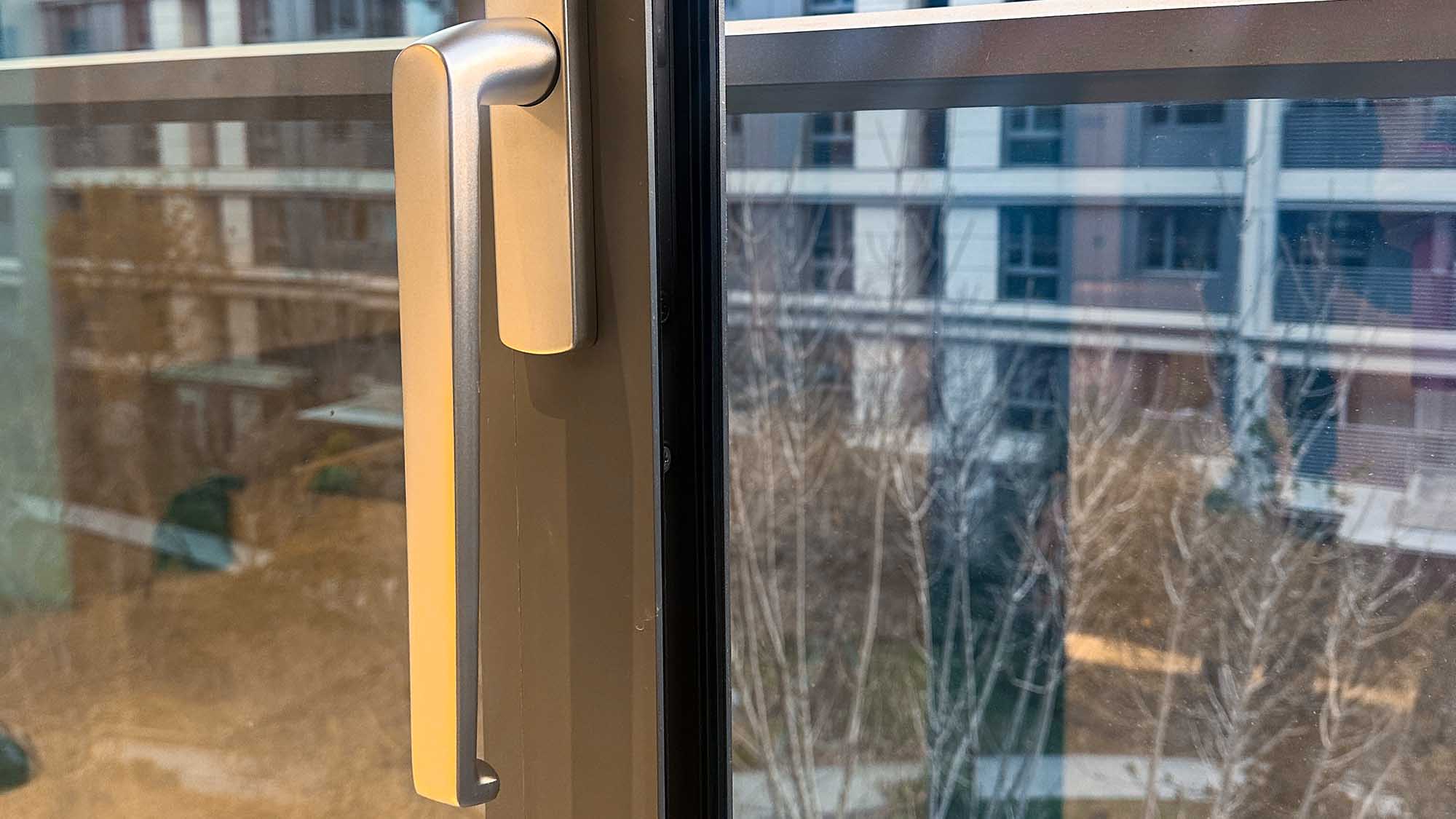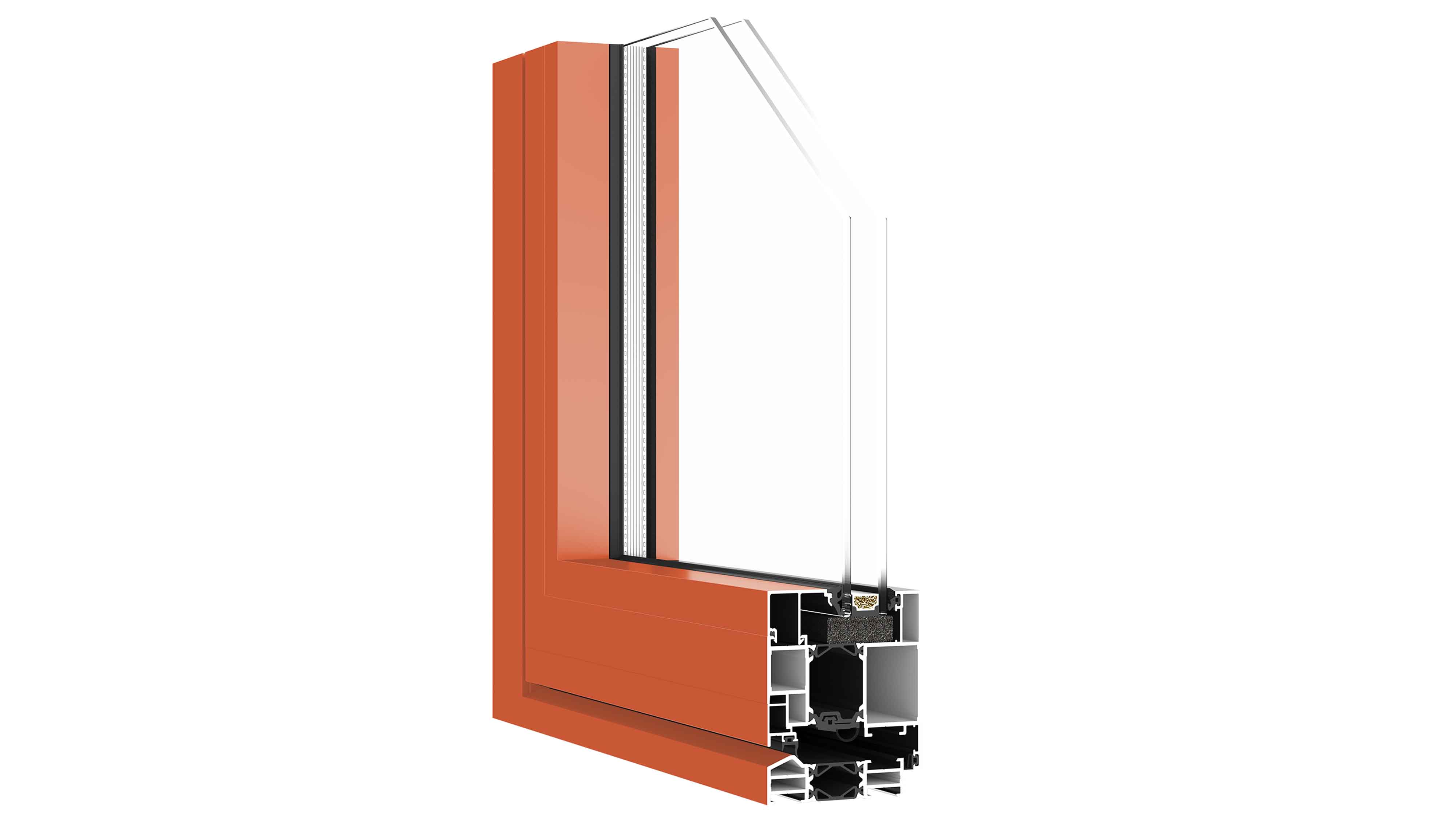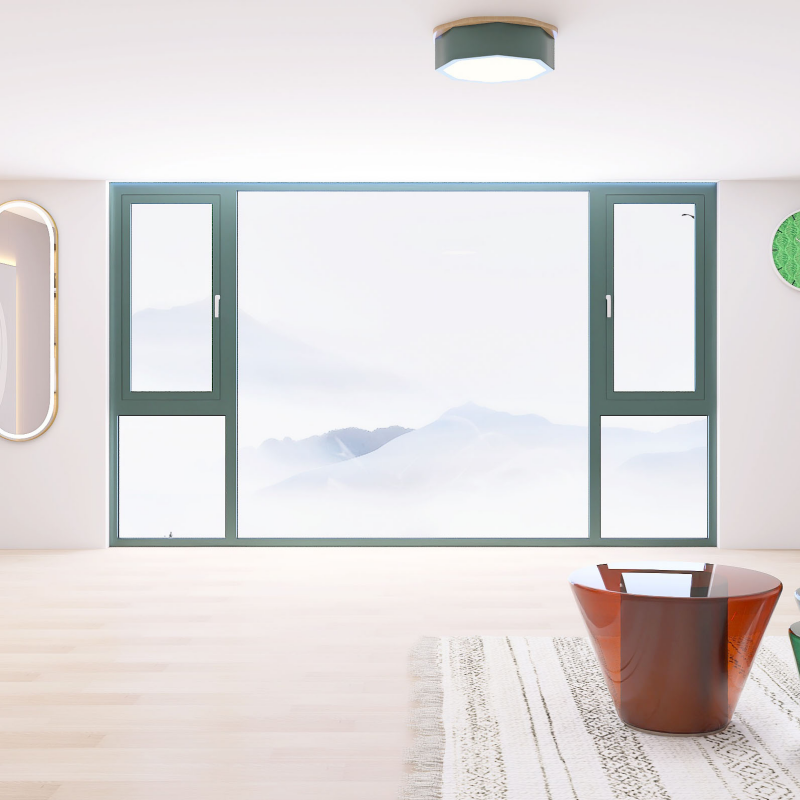Materials:
● Standards say that window frames should be at least 1.4mm thick, and door frames should be at least 2.0mm. But many sellers lie about the thickness—like claiming a profile is 1.4mm when it actually measures just 1.32mm in real tests.
● For insulated aluminum doors and windows, the thermal break strips should be made of PA66 nylon (usually black), not cheap PVC. When you cut open the profile to look inside, the insulation strip should fit snugly against the aluminum, with no looseness or cracks.

Outward Opening Aluminum Casement Windows & Insulation Aluminum Window Screen Integrated
Glass:
● Glass makes up over 70% of a door or window’s area, really affecting how comfortable a space feels. Using double-layer insulating tempered glass (like 5mm + 12A + 5mm) is a good choice. It cuts down noise by more than 40% compared to single-pane glass and, if broken, it breaks into dull, blunt pieces, making it safer. For homes near busy streets or in tall buildings, triple-layer insulating glass with argon gas between the layers can improve heat insulation by about 30%.
● Bathrooms needing more privacy can go with frosted tempered glass. If noise reduction is a top priority, laminated glass with a PVB film inside works best—it's really good at blocking out high-frequency sounds.

Outward Opening Aluminum Casement Windows & Insulation Aluminum Window Screen Integrated
Hardware:
● Handles on doors and windows should turn easily without any resistance, and locks need to lock firmly without feeling loose. When testing sliding door pulleys, they pass if, after adding 20kg of weight and sliding them back and forth 20 times, they don’t make noise or get stuck.
● Corner brackets should be made of cast aluminum, and the assembly process should include injecting glue to stop water from leaking in. Many small workshops use plastic corner brackets, but if you press the window frame by hand, it’ll shake noticeably.

Outward Opening Aluminum Casement Windows & Insulation Aluminum Window Screen Integrated
Sealing:
● The seal strips between door leaves and frames should be made from EPDM rubber (ethylene propylene diene monomer). If you press them with a fingernail, real EPDM strips will bounce back quickly without leaving any marks.
● For the pile strips in sliding door tracks, the best choice is dense siliconized pile strips. When you burn a small part with a lighter, good-quality pile strips won't melt and won't give off a strong smell.
● Outward-opening windows need to have hidden drainage holes. The inside edge of these holes should be about 5mm higher than the outside edge to stop rainwater from flowing back inside.

Outward Opening Aluminum Casement Windows & Insulation Aluminum Window Screen Integrated
Installation:
● Fixing method: Use expansion screws spaced no more than 50cm apart, and apply waterproof adhesive to secure them. Avoid filling directly with cement, as it tends to crack over time.
● For foam filling: Fill any gaps between doors or windows and the walls with polyurethane foam adhesive. On the outside, add a weather-resistant sealant, making sure it's at least 3mm thick.
● Level calibration: After installing, check the frame with a level. The diagonal measurements should be within 2mm, and the vertical alignment should be within 1mm.
● Water seepage test: After it rains, examine the window sills and around the frames. They’re good if there are no water stains or leaks.



